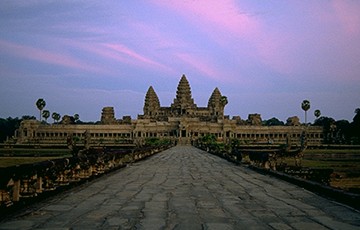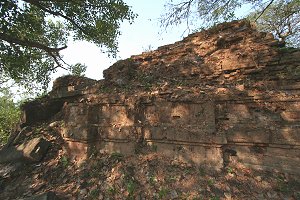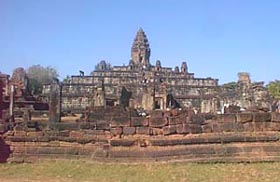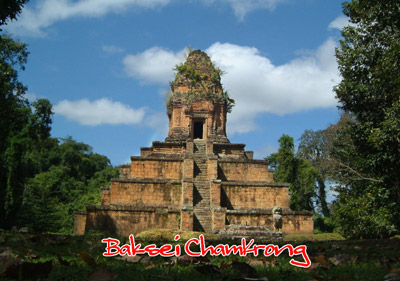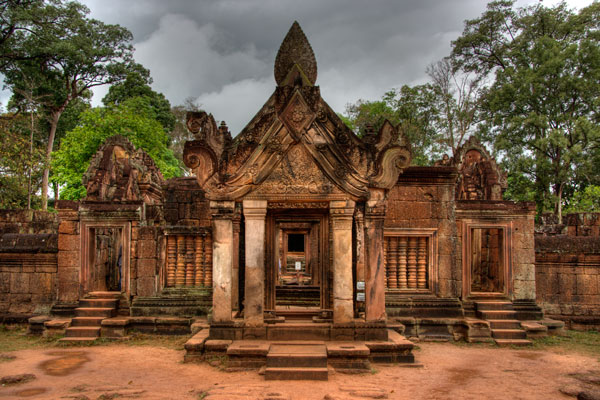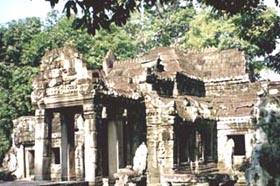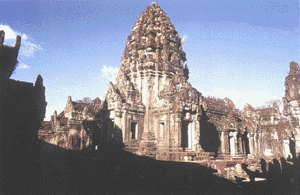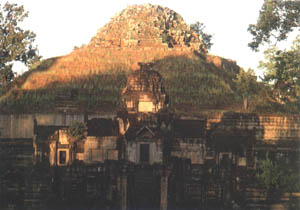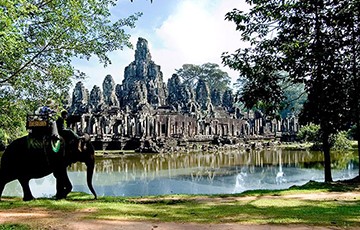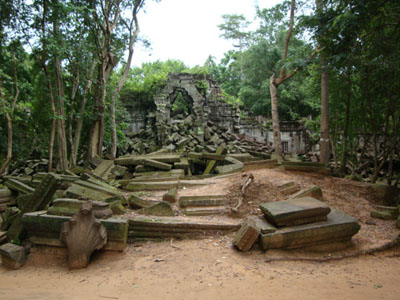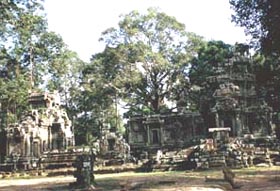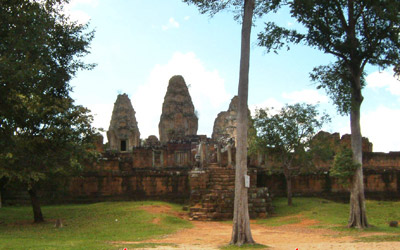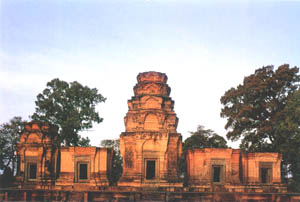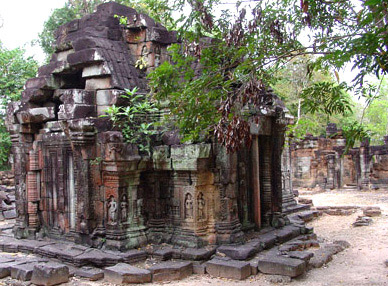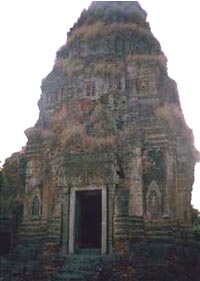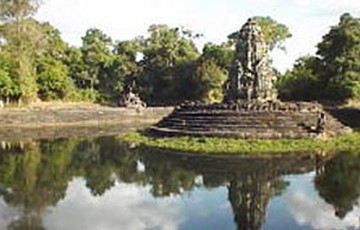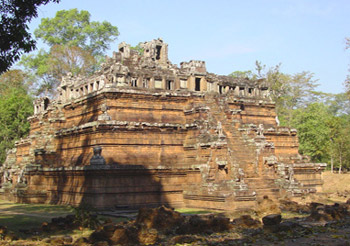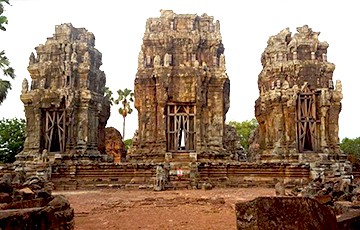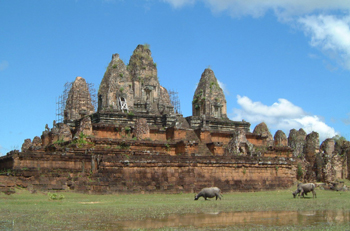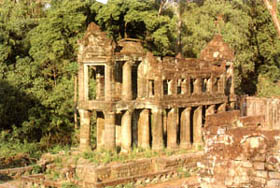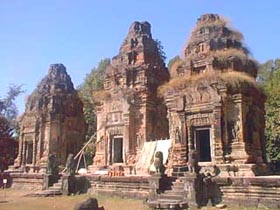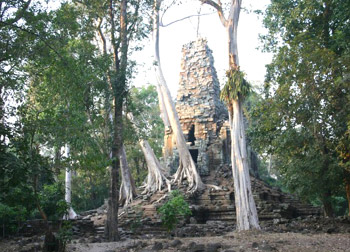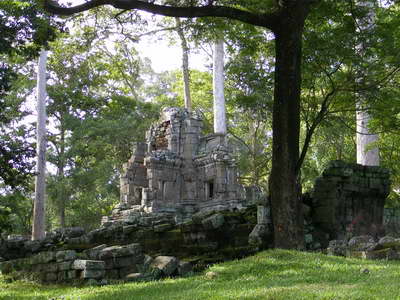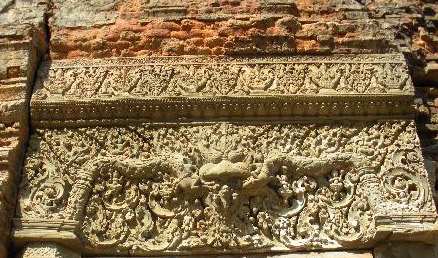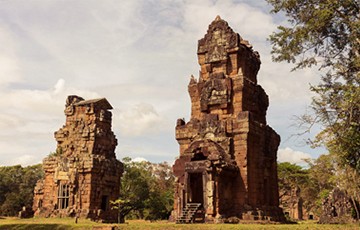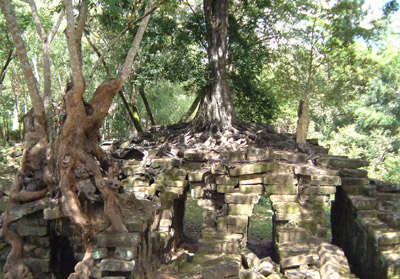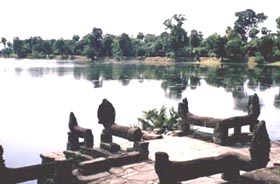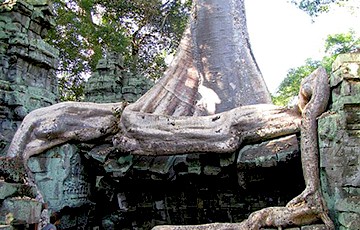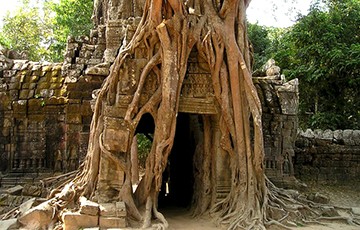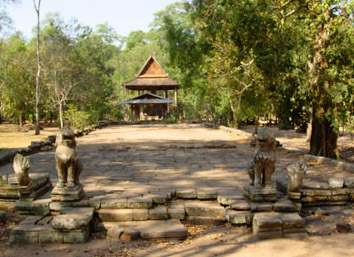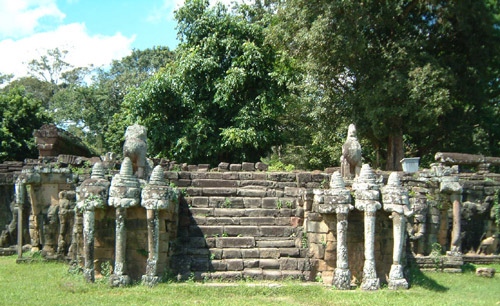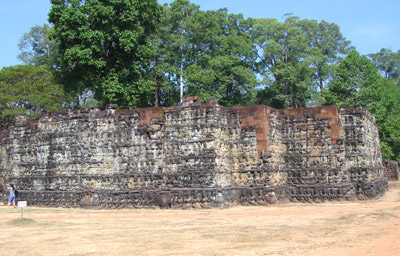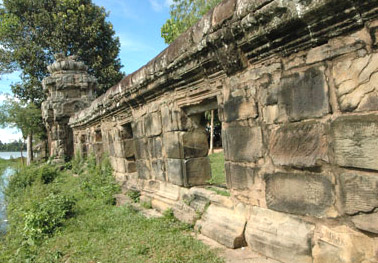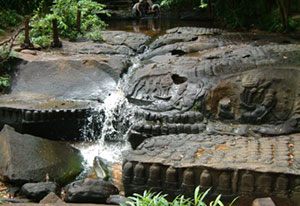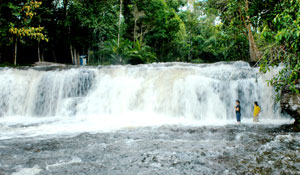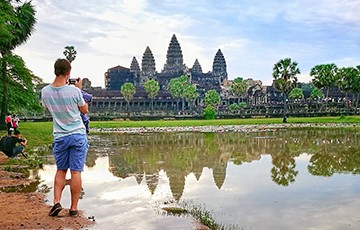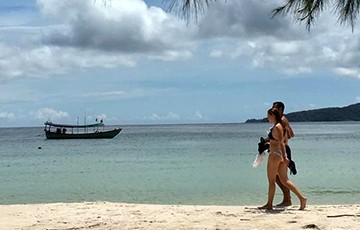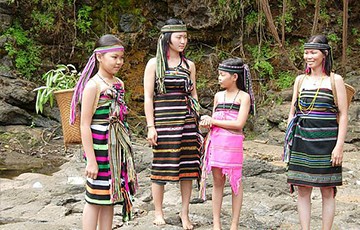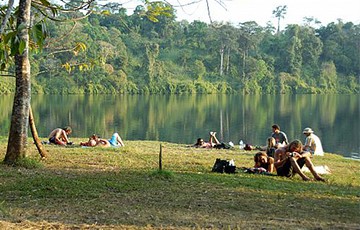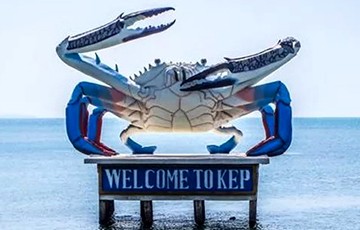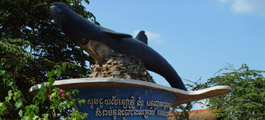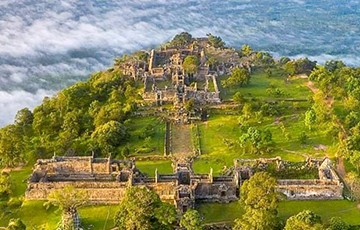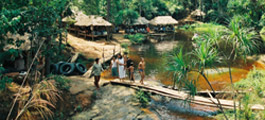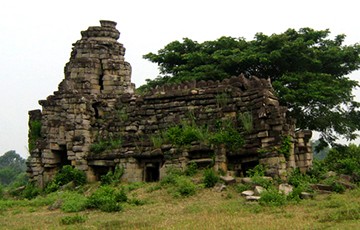Ta Keo - The Ancestor Keo or Tower of Crystal or Glass
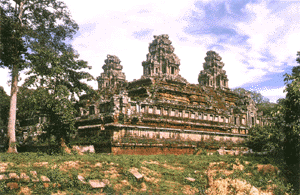 The majestic ziggurat of Ta Keo, most enigmatic of the minor fanes, stepping up toward the sun with dignity and power suggestive of Angkor vat. It is dripping with green and crowned with trees, but is still supreme over the forest.
The majestic ziggurat of Ta Keo, most enigmatic of the minor fanes, stepping up toward the sun with dignity and power suggestive of Angkor vat. It is dripping with green and crowned with trees, but is still supreme over the forest.
Its rocky masses, rising above the tops of the coconut palms, convert the impression that it only recently emerged from some cavern underground, carrying the forest with it in its rocketing ascent.
Ta Keo's lack of ornament makes it distinctive among the works of the Khmer, who were so prodigal of decoration. But its very simplicity give it architectural importance, its plan shows the development of anew spirit in the people, the growth of good taste.
Ta Keo is locate in the east of Thommanon and ChauSay Tevoda. A enter and leave by the south or east entrances.
Tip: The ascent to this temple is step and because of its orientation a visit in the morning is preferable.
It was built in the end of the tenth century to early 11th century by the King Jayavarman V to Suryavarman I dedicated to Siva (Hindu), replica to Kleang style of art.
BACKGROUND
An unusual aspect of this temple is that it remains unfinished; the reason for its no completion is unknown. Had it been finished, Ta Keo would undoubtedly have been one of the finest temples at Angkor. It is an imposing sight, scaling 22 meters (72feet) to the sky, and gives an impression of power.
Ta Keo is the first temple built entirely in sandstone and as such serves as a milestone in Khmer history. Enormous blocks of stone were cut to a regular size and placed in position. The absence of decoration at ta Keo gives it a simplicity of design that separates it from the other monuments.
LAYOUT
Ta Keo is square in Plan with five towers arranged like the dots on the face of a die and stands majestically on a terrace that is 12 meters (39 feet) high with three tiers. It is a representation of Mount Meru. The base has fine molding. The temple has two enclosures (1 and 2) with entry towers on each side.
There are inscription on the pilasters of the east entry tower. The first two tiers of the platform form the base of two courtyards. One is enclosed by a wall the other by a gallery, the gallery is too narrow to permit walking around.
The east entrance to Ta Keo is marked by a causeway over a moat that is preceded by lions and boundary stones (not shown on the plan ). The entry tower in the exterior wall was made of sandstone with a central tower and three passages. On each side of the east wall there was a long hall that was probably a shelter for pilgrims. It was preceded by a porch with pillars.
The second terrace has a molded laterite base with four sandstone entry towers, one on each side. It is surrounded by a sandstone gallery lit by windows on the in terrier. The gallery completely surrounds the terrace and has openings on each of the four sides. On the east there are two long halls of the same type as the rest halls on the first terrace. Two libraries open to the west.
CENTRAL AREA
The upper level is square and stands on a tiered base with stairways on each side> Most of the space on the upper level is occupied by the five tower, all unfinished, opening to the four cardinal points. The Central Sanctuary dominates the layout. It is raised above the other towers and is given further importance by the development of porches and pediments. The interior of the central tower is undecorated





